Plasma DefinitionThe liquid part of blood is termed plasma or blood plasma. Plasma serves as a conduit for transporting nutrients to the cells of the body's organs as well as waste products generated by cellular metabolism to the kidneys, liver, and lungs for disposal. It serves as a mechanism for transporting blood cells and is essential for preserving normal blood pressure. The component of the blood that transports the blood cells is transparent and yellowish. Plasma contains the proteins necessary to create blood clots. Plasma, which also assists in the transport of heat throughout the body, maintains the body's homeostasis, or biological stability, which includes the acid-base balance in the blood and body. 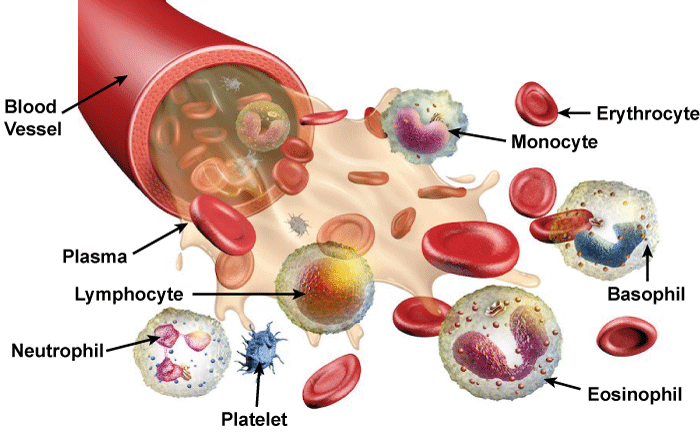
How is Plasma Made?Your umbilical cord cells make plasma cells in the embryo. Your spleen, liver, dying blood cells, and the surrounding tissues of your bones all produce plasma proteins (bone marrow). What Purposes Does Plasma Serve?Plasma in your body may perform a variety of tasks. Plasma is responsible for the following:
Details About PlasmaPlasma makes up the majority of your blood. It comprises more than half (about 55%) of the whole corpus. When the blood is separated from the rest of it, plasma, a pale-yellow liquid, forms. Salts, enzymes, and water are all carried by plasma. Plasma's primary function is to transport proteins, hormones, and nutrients to the body's many organs. Plasma is also where cells expel their trash. The body then uses the plasma to help eliminate this waste. Blood plasma also carries every component of the blood throughout your circulatory system. How Does Plasma Maintain Your Health?A vital component of the therapy for many significant health issues is plasma. People are requested to donate blood plasma during blood drives because of this. Essential components, including water, salt, and enzymes, are also present in plasma. When you donate blood, medical personnel can remove these crucial components from your plasma. Afterward, these parts may be combined to create a variety of products. These things are then used as treatments to help people who are suffering from burns, shock, trauma, and other medical conditions preserve their lives. Plasma proteins and antibodies are also employed in treatments for a variety of uncommon, chronic illnesses. These include autoimmune illnesses and hemophilia. People with these conditions can live full and active lives thanks to medicines. Moreover, some medical institutions refer to plasma as "the gift of life." FunctionsPlasma serves a variety of roles in the body and is the liquid component of blood. Proteins, hormones, and nutrients are all transported to various regions of the body via plasma. Moreover, it transports metabolic waste from different tissues to the organs in charge of detoxifying and/or excreting it. Moreover, plasma serves as the means through which blood cells are transported via blood arteries. Many of these tasks include
Plasma in the blood aids in the movement of nutrients, electrolytes, hormones, and other vital components throughout the body. Transporting waste materials to the liver, lungs, kidneys, or skin aids in the removal of waste products as well. How Does It Maintain Bodily Health?By carrying out the aforementioned duties, plasma keeps humans healthy. It ensures that nutrients, proteins, hormones, and other substances get to the parts of the body that require them. Plasma includes vital components like clotting factors and antibodies, as well as proteins like albumin and fibrinogen. Plasma donations are sought at blood drives for this reason. To keep donated plasma pure and functioning, medical professionals collect it and freeze it. FFP, or fresh frozen plasma, is the term used to describe this. The critical plasma components may then be isolated and concentrated into a number of products that doctors can use as life-saving drugs by giving FFP to medical institutions or pharmaceutical companies for further processing. By employing FFP, scientists can make cryoprecipitate, which is rich in clotting factors and useful for those who have bleeding issues. What Distinguishes Plasma from the Other Blood Constituents?While your blood sample spins in a centrifuge, it is divided into several layers (centrifugation). Your blood cells (red and white), as well as platelets, make up the bottom layer of the yellow top layer of plasma. What Ailments or Disorders Affect Plasma?There are several unusual diseases that can affect blood plasma, including:
What Signs or Symptoms Appear in Plasma Disorders?
What Procedures evaluate the Plasma in My Body?Many tests are available to determine your plasma's condition:
What Common Therapies are Available for Plasma Disorders?Depending on the illness's severity, there are several treatments for plasma problems. Among the treatments include:
Donation of Blood PlasmaIn medicine, blood and its constituent parts constitute a priceless resource. According to the available data, the US healthcare system needs close to 10,000 units of plasma per day. Because of this, some individuals refer to blood plasma as liquid gold. Clinically, plasma can be used in a variety of ways by medical practitioners. Plasma is particularly useful in the life-saving treatment of burn victims, trauma victims, liver disease patients, and patients with uncommon blood illnesses. Blood product donations through Trusted Source are a secure and easy process. Plasma donations can be made by whole blood or plasma donations by individuals. 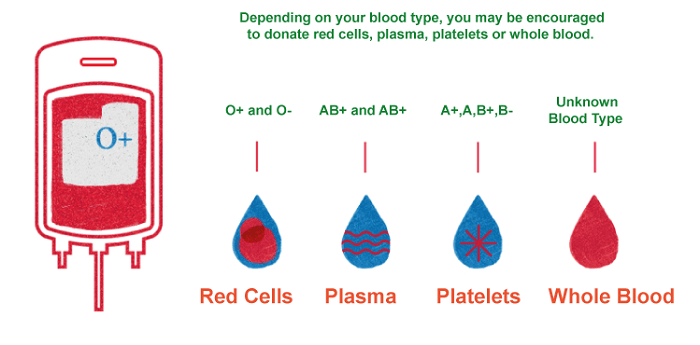
Those who might require blood as a whole and not its constituent part, such as those who are recovering from surgery, can receive it from medical experts. Alternatively, scientists might divide the blood into its various components and use it as needed. Plasma donation entails taking blood, separating the plasma, and then giving the donor their remaining blood via a procedure known as plasmapheresis. This sort of donation takes a little bit longer than whole blood donations but produces more blood plasma because the donor is simply giving plasma, allowing for more frequent donations. Plasma from people with the blood type AB is a universal kind. Thus it may be safely given to anybody. This kind of plasma can be given to people in emergency circumstances right away, which might mean the difference between life and death. Those with type AB blood are urged by the American Red Cross to donate plasma. This can be done up to 13 times a year or every 28 days by people with this blood type. How can I Maintain a Healthy Plasma?
Platelet-Rich Plasma: What is it?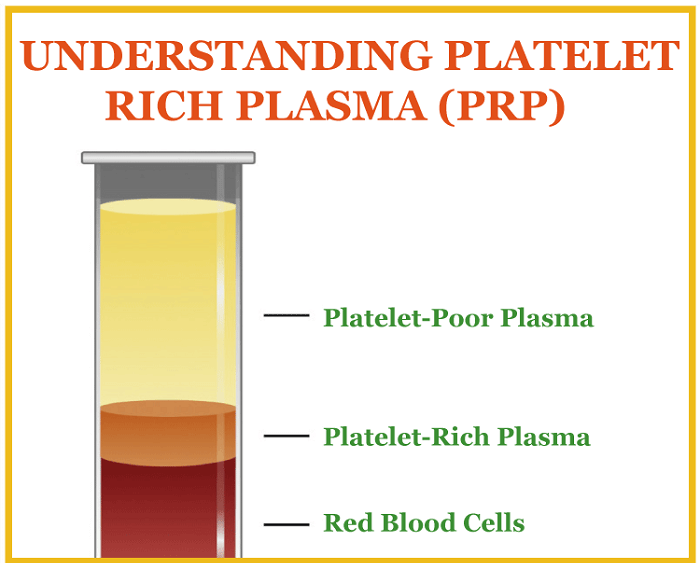
Combining platelets with plasma to create platelet-rich plasma may help the body heal and mend wounds. In the event of an accident, platelets aid in blood clotting. After extracting blood from your vein, a centrifuge machine swiftly separates your blood into layers, separating red and white blood cells while keeping plasma and platelets. Your healthcare professional injects platelet-rich plasma into your body to repair injuries, including:
Certain Components and Their UseThe plasma ions, proteins, and other components maintain the blood's pH and osmotic pressure. The most prevalent components of plasma are its proteins, which come in three main categories: albumin, globulins, and fibrinogen. They perform the following specific roles:
Interstitial edema, a symptom of liver problems, renal illness, and malnutrition, for example, may develop when the plasma proteins are inadequate and the water in the plasma leaks into the area around the blood vessels. Several other molecules, including medicines, hormones, and fatty acids, are transported with the aid of albumin.
The best-known function of HDL is its ability to retain cholesterol in the bloodstream while avoiding plaque formation. Beta globulins, called low-density lipoproteins (LDL), carry fat to the cells, where it is used to synthesize steroids and cell membranes. Moreover, it encourages the development of cholesterol plaque, a risk factor for heart and artery disease. Immunoglobulins are another name for antibodies or gamma globulins. They are created by a group of immune cells called B lymphocytes. The humoral immune system of the body is controlled by antibodies, which recognise infections via certain receptors and neutralise them through a variety of techniques.
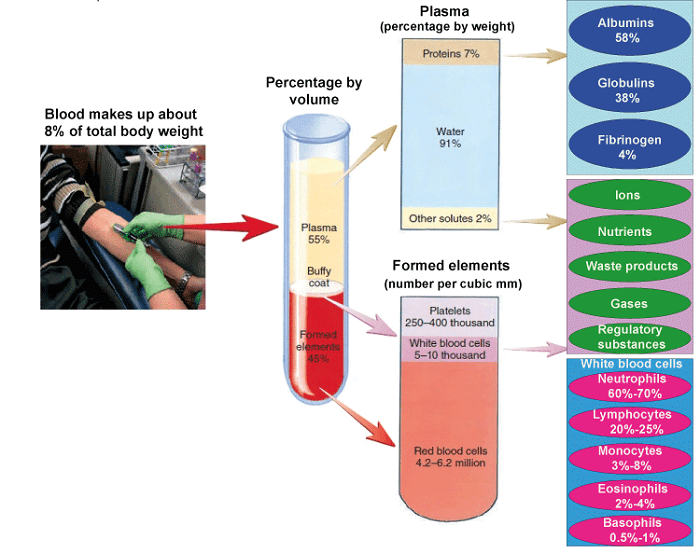
Other PurposesBy securing extra hydrogen ions in the blood, plasma proteins maintain a slightly alkaline blood pH. By being broken down by macrophages, plasma proteins may provide an additional source of amino acids when needed. Small molecules are often transported by plasma proteins, which attach to each one after intestinal absorption and transport it to the tissue or organ that needs it. Additional Plasma Components
Cytokines are cellular signaling molecules that are produced by cells to facilitate communication and control critical cellular functions. Hormones are substances that are produced by one organ or cell type and travel through the circulation to act on another at a distance in order to cause long-distance effects.
The most common ion in plasma, sodium, makes up the majority of the plasma osmolarity.
The amino acids from broken-down tissues or plasma proteins may be used to create new biological structures. This might affect the lungs, lymphatic system, and gut macrophages. 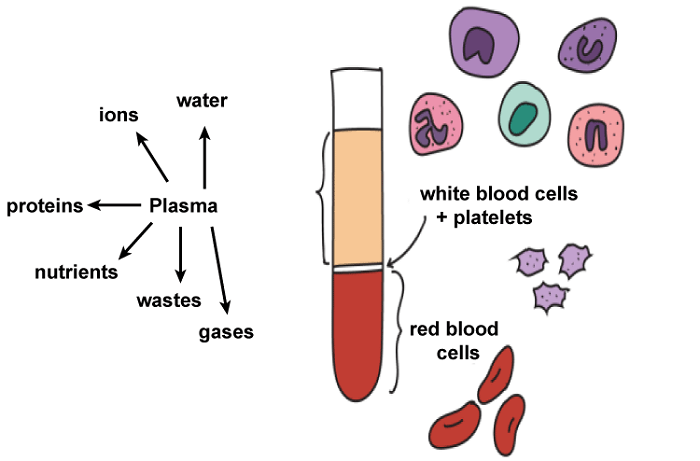
The breakdown of numerous chemicals in the body results in the production of nitrogenous waste molecules like urea. They are transported to the kidneys by the plasma for excretion.
Glucose, lipids, amino acids, minerals, and vitamins are among the nutrients transported in plasma that are absorbed from the gut or from other organs of origin.
In addition to dissolved nitrogen, plasma also includes minor quantities of dissolved oxygen and carbon dioxide.
Next TopicPoison Definition
|
 For Videos Join Our Youtube Channel: Join Now
For Videos Join Our Youtube Channel: Join Now
Feedback
- Send your Feedback to [email protected]
Help Others, Please Share










